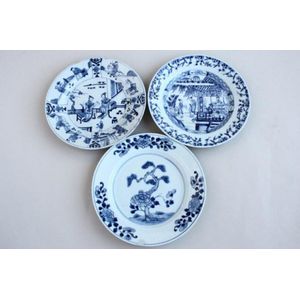Bombe Diamond Ring with 2.03ct Center Stone
You must be a subscriber, and be logged in to view price and dealer details.
Subscribe Now to view actual auction price for this item
When you subscribe, you have the option of setting the currency in which to display prices to $Au, $US, $NZ or Stg.
- Carat - A carat (abbreviated "ct") is a unit of measurement used to describe the weight of a diamond or other gemstone, and separately is a unit of measurement used to describe the weight of precious metals such as gold,.
For gemstones, one carat is equal to 0.2 grams or 200 milligrams. The weight of a diamond is one of the Four Cs (along with cut, colour, and clarity) that are used to determine a diamond's value.
It is important to note that a diamond's weight does not necessarily correspond to its size. A diamond's cut, which affects how well it reflects light, can make a diamond of a lower weight appear larger than a diamond of a higher weight. Additionally, the carat is not the only factor to determine the value of a diamond, other factors such as clarity, colour and cut are important too.
In the gold industry, the purity of gold is measured in carats (abbreviated "ct"), with 24 karats being pure gold and lower carat numbers indicating a lower purity level. So, for example, 18 carat gold is 18/24 or 75% pure gold, and 12 carat gold is 12/24 or 50% pure gold. - Bombe Design in Jewellery - In the early 18th century, during the reign of Louis XIV, French court jewellers developed a new style of jewellery called "bombé" because of its bulging, curved shape.
The bombe design can be found in various styles of jewellery, from Georgian, Victorian, Art nouveau, to Art Deco and Retro eras, with the materials and techniques reflecting the era the jewellery was made.
The design is used for rings, bracelets, necklaces and earrings, where a curved or rounded shape is emphasized, giving an organic look to the piece, with the piece often made of gold and set with precious stones, such as diamonds, rubies, emeralds, and sapphires. The bombe design was also paired with other design elements such as engraving, enamelling, or gemstones
This item has been included into following indexes:
Visually similar items

A pair of Spode porcelain plates, English, circa 1815 centrally crested with the seal of the King of Oudh to commemorate the seige of Lucknow. 21 cm diameter

A large Chinese blue and white porcelain plate, Kangxi period (1690-1710), the centre of the interior decorated with a long-tailed pheasant on a rock under a branch of flowers, above with a arms of Pelgrans set in a band in which formalized lotus flowers s

Three Chinese Qing Dynasty blue and white porcelain plates, one decorated with tree, flowers and foliage, two decorated with figures at work and play, a/f, diameter 23 cm, (3)

A Chinese famille-rose 'Flowering peach' saucer dish, Yongzheng four-character mark, 20th century, 23.8 cm diameter. Provenance: NSW private collection, acquired from 'See an old friend' circa 2000, Exhibition and Publication: Innovation and Continuity: 20
